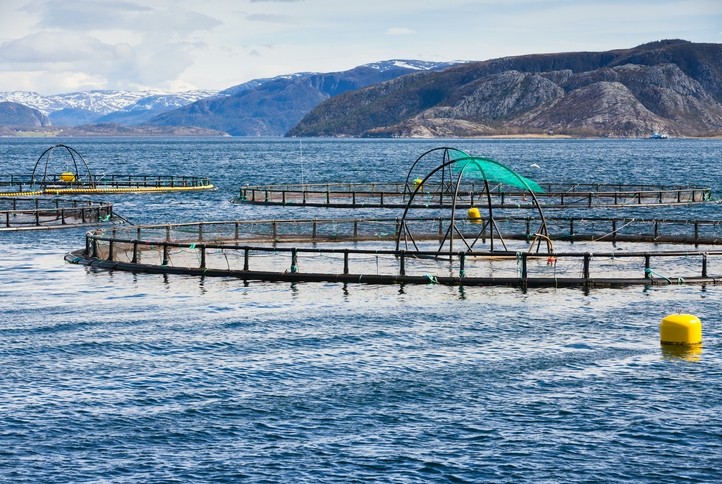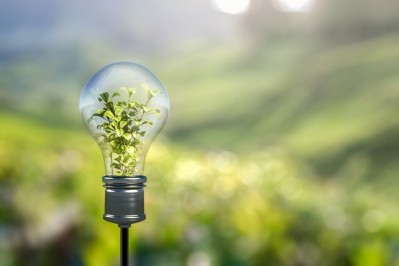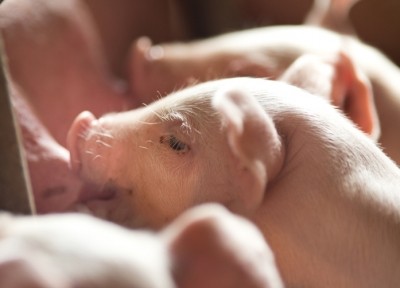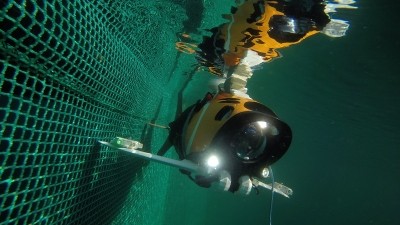Feed link to PBDE accumulation in farmed salmon investigated

An international team of researchers from the US and Switzerland examined the factors contributing to the levels of those chemicals in farmed salmon.
The study was published in the journal of Environmental Science and Technology.
Chemical concentration in a food item depends on local environmental contamination, production conditions, and, for animal-derived foods, on feed. The research team said they investigated those influences on the accumulation of individual PBDEs in farmed Atlantic salmon (Salmo salar). They developed a dynamic model over a full sea-cage salmon production cycle.
To assess the influence of metabolic debromination on PBDE congener profiles, in vitro measurements of debromination rates in fish liver cells were extrapolated to whole-body metabolic rate constants.
The team said their model results indicated the dominant factors governing PBDE concentration in Atlantic salmon fillet are uptake via contaminated feed and fish growth, whereas the influence of metabolic debromination is minor.
They said PBDE concentrations in fish feed depend on several factors, including the geographic origin of fish feed ingredients, which are produced and traded globally.
The goal of the project was to use models to improve the understanding of how contaminants come to be in food products, said Carla Ng, corresponding author and professor at the University of Pittsburgh.
Because the chemical can accumulate in fish, especially if they are given a feed made with other fish, the project highlighted the need for awareness regarding the source of the feed ingredients, she said.
“There are a couple of important implications here, the first is that it matters that it is well documented where the feed ingredients come from, not just where the prepared feed comes from, but what the ingredients are in that feed,” she told FeedNavigator. “If some of the ingredients of the feed include wild fish, then where those fish are caught matters. If it happens to be a hot spot, where you might expect to see high concentrations of contaminants.”
Forage fish can be raised or caught in areas where there are already high levels of PBDEs in the environment, said Ng.
The team concluded that human exposure to PBDE via salmon consumption is less influenced by environmental concentrations at the location of salmon farming than by environmental concentrations influencing feed components.
“The PBDE in farmed fish question – it’s an overarching problem with the whole industrial food system and because it is very complex, it is difficult to trace all of the ingredients back to where they were they were grown and that introduces the potential for contaminants,” Ng said. “Especially because PBDEs aren’t intentionally applied."
Why examine PBDE in salmon production and feed?
The examination focused on PBDEs because previous research has found levels of them in fish, Ng said. The chemical is hydrophobic, which means it tends to accumulate in fatty tissues.
“We knew to look at PBDEs because there have been experimental studies in the past, monitoring studies that found high levels of PBBE in fish,” she said. “They have a tendency to accumulate in fatty tissues – chemicals like PBDEs are a good bet to find in fish because they’re distributed in the environment and they prefer to accumulate in organisms rather than to stick around in water.”
Additionally, the feed used for some farmed fish can also provide a source of the environmental contaminant, she said. “The reason that fish are an interesting species to look at – fish are one of the few organisms we eat that are predators themselves,” she added.
“Fish eat other fish and when you talk about contaminates that bio-magnify – that is that they are increasing in concentration as they go from prey to predator, the higher the level of the thing that you’re eating in their own food web the higher the concentration of that chemical is going to be,” said Ng. “Where that [forage] fish is caught and the environment in which that fish is either caught or grown will matter to what concentrations it has and that is going to accumulate in the fish that we are eating eventually.”
The chemicals tended to be released into an environment previously because they were included in as a flame retardant in furniture or electronics, said Ng. Now many of them are released during some methods of recycling old electronics.
In some regions, including in China, parts of Southeast Asia and Africa, one method of removing valuable components in old electronics involves burning the plastic, she said. “When you burn the plastic, the PBDEs get released into the environment, they deposit in the water and accumulate in the aquatic life,” she added.
“Areas where they have high rates of e-waste recycling that are not environmentally controlled, a lot of those informal e-waste recycling areas tend to have high levels of PBDE in their environment,” she said.
The chemicals are a concern because they are known to be a developmental toxin, which can harm the development of children, damage the liver and disrupt the endocrine system, said Ng. Most uses of the chemicals are now banned.
Study details
In the analysis, researchers developed a model to assess the PBDE uptake by fish based on bioaccumulation through feed or the environment. The group assessed the complete mass balance of the intake.
Simulations were run examining the role of production conditions, they said. The first examined fish feeding rates and data and the second assessed fish body weight values.
Approximated concentrations of PBDE in water and feed were established to fill in elements of the models, which aimed to determine what concentration of PBDE elements would be found in fish after a 500-day production period, they said.
Results and implications
Based on the modeled results, concentrations of most of the contaminants increased in fish for the first 100 days, decreased and established a quasi-steady state for about 100 days, before increasing again for the last 150 days, the researchers said.
The models indicated that the important factors linked to the concentration of PBDEs in salmon were fish feed and environment, they said.
“Human exposure to PBDE via salmon consumption is less influenced by environmental concentrations at the location of salmon farming than by environmental concentrations influencing feed components,” they said. “This dependence of PBDE concentrations in salmon on the origin and composition of feed reveals the complexity of predicting contaminant concentrations in globally traded food.”
One implication from the study is to know feed and feed ingredient origins, said Ng. Another is the importance of testing feed ingredients and being aware of “persistent environmental pollutants.”
“There are well-established methods to test and there are decontamination methods,” she added.
The contaminants also can be absorbed by fish when they’re present in the environment, she said. “When a fish breathes in, they’ll get transferred into the gills and they won’t transfer back out because they’ll solubilize into the fat tissue rather than transfer back to water – that’s the direct [path] from the environment to fish,” she added.
“In the food web, they’ll accumulate in algae and then the algae will get eaten by the invertebrates which get eaten by the fish and at every one of those steps you get a further magnification,” Ng said. “The fattier the fish, the higher the concentration tends to be. This is why salmon is problematic because it is a fatty fish.”
Source: Environmental Science and Technology
DOI: 10.1021/acs.est.8b00146
Title: Polybrominated Diphenyl Ether (PBDE) Accumulation in Farmed Salmon Evaluated Using a Dynamic Sea-Cage Production Model
Authors: C Ng, A Ritscher, K Hungerbuehler, N von Goetz














